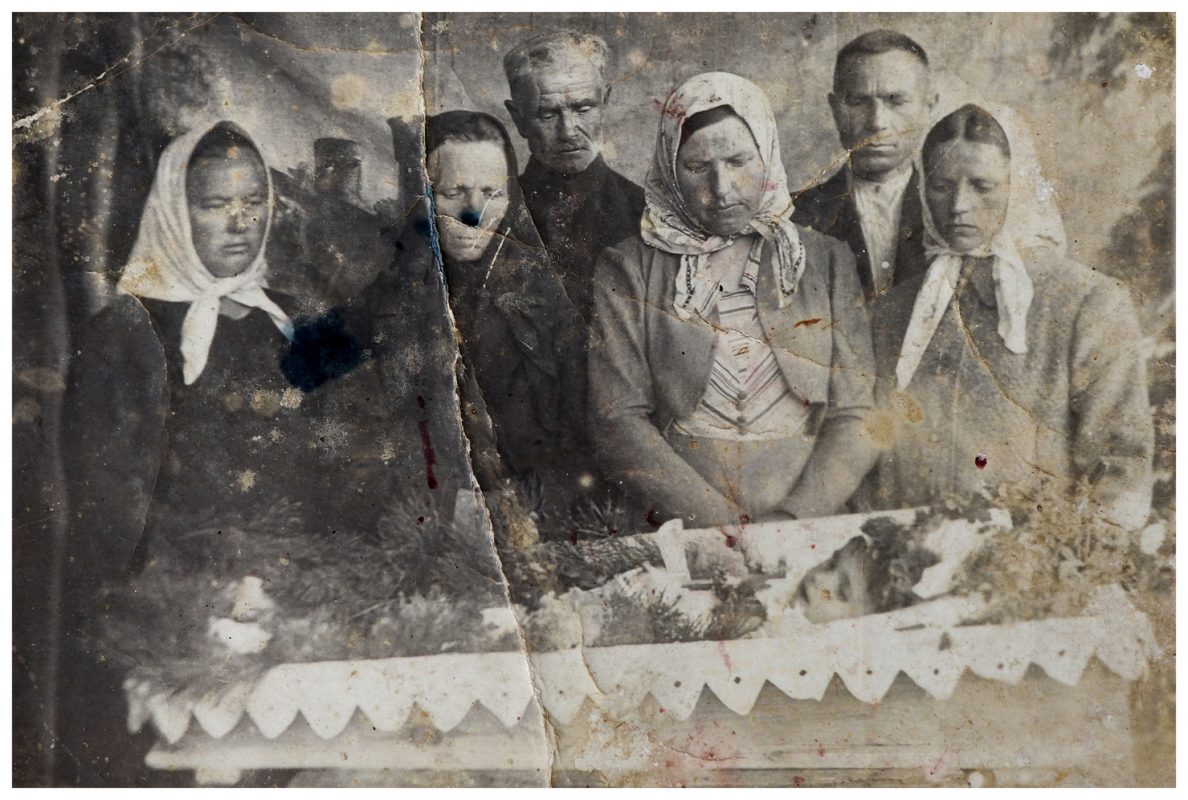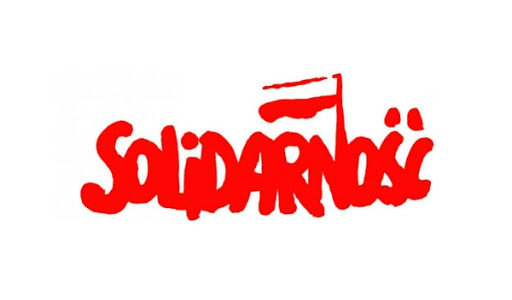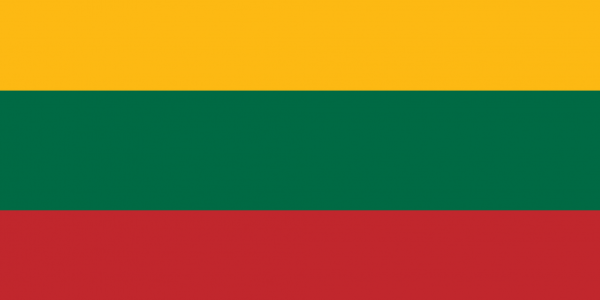Beata Bruggeman-Sekowska
Interview with Claudia Heinermann, a prize-winning author of Wolfskinder and an author of a new Trilogy: ‘Siberian Exiles’.
Beata Bruggeman-Sekowska: You are the author of the prize-winning book Wolfskinder A Post-War Story. And since 2016 you have been working on a very special project devoted to the oppression of communism, abuse of power and crimes against humanity. The first part of the trilogy is ready and will be a monumental design of 780 pages material divided over 5 separate books in a slipcase. Tell us more about your trilogy ‘Siberian Exiles’.
‘Siberian Exiles’ is a project about the deportations from the Baltic States to Siberia under the Soviet regime. In 2016 I traveled a couple of times to Lithuania, Latvia and Estonia to start my research in archives and museums about this topic. I found many stories which are unknown to the general public but worth and important to tell. For every country of the Baltic States I choose a different angle to tell about the deportations and the cruelty of Stalin and the Soviet-regime. All parts are based on individual stories. The first part is about the deportations of 6 Lithuanians: Irena, Nijolė, Jonas M, Vilius, Jonas P and Vaidutis to the Laptev Sea in the arctic. The second part will be about an Estonian woman, Marju, who was deported to the border of Kazakhstan where she eye-witnessed upper ground Nuclear Tests. And the third part will be about two Latvians, Jānis and Johanna, who were deported to Doedinka. They fell in love with each other and photographed their way of living up in the North, which is very personal and unique material.

With all the three parts I will talk about the post-war history of the Baltic States, the beginning of the Cold War and about the places where the deportees were sent to.
Signing of the Molotov-Ribbentrop Pact and its secret protocols led to the outbreak of World War II and formed the basis of two totalitarian regimes: nazism and communism which divided Europe and independent countries into spheres of their own interests and influence. Communism around the world caused more than hundred million deaths, countless deportations, persecutions, pain, suffering, hunger, fear, destroyed lives of many generations. Many stories of suffering and torn-families are not known to the wider audience. How did you get in touch with this subject?
While I was working on my previous project in Lithuania about the wolf children (German war orphans) I often heard about deportations to Siberia. Lithuanian farmers who sheltered the wolf children, did so with the risk of being deported if the Soviets found out. Of course I knew about the Gulag camps but I didn’t know that besides the camps thousands of people, mostly women and children were deported to remote areas in Siberia without any conviction. I wanted to learn more about the topic and started my research.

Tell us more about the 1st part of your trilogy.
The first part of the trilogy entitled Siberian Exiles, focuses on the experiences of six Lithuanians, who were deported as children to the Laptev Sea above the polar circle. During the first major mass deportation in 1941, their families were sent to the Altai region in the south of Siberia to work as farm labourers. In 1942, they were moved, along with three thousand other Lithuanians, to the Laptev Sea, an arctic region, where winter reigns for ten months a year and the temperature can drop to fifty degrees below zero. The Lithuanian deportees had the task of setting up a fishing industry above the polar circle. Women and children were dumped without housing, protective clothing, food or technical equipment. Little children often had the task of keeping the fire burning and collecting driftwood, while the older children were put to work in children’s brigades. The exiles suffered from constant hunger and many illnesses such as scurvy. For many it became a death sentence.

The Lithuanians shared their destiny with deportees from Finland and from Churaptsha, a village in Yakutia, East Siberia. All lived under equally miserable conditions and many perished. At the end of the 1950s, the Lithuanians were finally allowed to return home. In 1989, a number of exiles returned to the Laptev Sea in search of the graves of their relatives who had perished there. They wanted to recover their loved ones from the permafrost and take them home because they had a deep desire to bury them in Lithuanian soil.
Based on the stories of the six eyewitnesses I visited the places where they were deported to. I have travelled through the Altai and Yakutia in search of traces of this remarkable chapter in history and I have recorded what encountered: the landscape of these remote areas, the villages, the culture, and the indigenous people with their still vivid memories of the time under Stalin.

The 5 books contain my photographs from my travels, the extensive interviews of the eyewitnesses and their portraits, archive photos and maps. They also contain very unique drawings from a former deportee, Gintautas Martynaitis and photos of the expedition in 1989.

You said once: ‘’What evil brain sends women and children to the arctic to build up a fish industry?’’. Is that what shocked you most? How evil communism was and that its cruelty had no limits?
Yes, it was. I was shocked by the cruelty of Stalin and the Soviet system. Of course this story is only one of the huge amount of examples. According to Anne Appelbaum eighteen million people were convicted and sent to hard labour camps (Gulags), four and a half million never returned home. Not to mention the millions which were deported without conviction.
The story of 3000 Lithuanian women and children who were sent to the arctic illustrate that a human life had no value under the Soviet-regime, not even the life of a child. Serving the system was the only what counted. Stalin had the most insane ideas and a whole ‘army’ of prisoners and deportees to realize them. No one took care about their living conditions and health. That was cheap and efficient. In my opinion a crime against humanity.

You said about your book: ‘’This book is a journey through history and has become a story about oppression, abuse of power and crimes against humanity. It is also a story about people who refused to be broken and to give up their identity and culture. It is about the human will to survive and human resilience.’’ What do you want to achieve with your project?
During my research I realized that the stories about deportations of women and children to Siberia are very underexposed topics in the western countries. Many stories were hidden behind the iron curtain without being known to the general public. As a documentary photographer it is my aim to contribute to keeping these historic memories alive and to share them with a wider audience so that they can get a part of our collective memory as well. The stories about oppression and abuse of power help to understand where the fear of the Russians in our neighbor countries comes from. The stories help us to be aware of political changes in wrong directions and to understand that freedom cannot be taken for granted.

When do you expect the book to be launched and where and what exhibitions are you planning?
The book launch is planned in January/ February in the Netherlands and Lithuania. Details about the exact date and location will follow.
The complete project will be exhibited from January till June 2021 in the Nederlands Fotomuseum in Rotterdam, followed by an exhibition in Vilnius.
You started a special crowdfunding action to support your project? How can we help you?
I started the crowdfunding campaign because I work as a self-publisher. That means that I take care of the complete production process and the distribution of the book myself. It also means that I have to finance the book myself. If you buy a book in advance via my crowdfunding website (like a presale) you help me a lot because with that money I can finance the book. But of course you can also support the project with a bigger amount and in exchange you will receive one or more signed prints from the book. Individual rewards, tailored on the needs and preferences of the supporter are also possible if you contact me. On my crowdfunding website www.siberianexiles.com you can find all options.

Claudia Heinermann, is a German- Dutch documentary photographer, based in the Netherlands. She is dedicated primarily to long-term documentary projects and contemporary historical issues as well as genocide and the consequences of war.
Claudia has published four photo books so far and has contributed to numerous publications both in The Netherlands and abroad. Her works have been acquired by various Collections and shown in several museums like as well as in galleries and photo festivals.
The project “Siberian Exiles” was made possible with contributions of: Fonds Anna Cornelis, Mondrian Fonds, Fonds Bijzondere Journalistieke Projecten, Wilhelmina E. Jansen Fonds
Photos and illustrations: with permission of Claudia Heinermann. © Copyright Claudia Heinermann, 2019. All rights reserved
Interview: © Copyright www.communications-unlimited.nl, 2019. All rights reserved
source: Central and Eastern Europe Center Communications-Unlimited.nl: https://www.communications-unlimited.nl/a-human-life-had-no-value-under-the-soviet-regime/




Follow Us!